
The ABC'S of Comic Art
When we look at art the first question we think how “desirable” is this piece, and why or why not. Do we love it, do we hate it? Why is this art so valuable or why is it so inexpensive? How do we come to these decisions? Can we look at art empirically? To attempt this, using CAG’s ABC’S of comic art can help us in this task. This is a quick guide an experienced or especially a beginner OA collector can use to break down a piece of art. The ABC’S four “ingredients” of a piece of OA. These four inputs are a part of EVERY piece of art, and therefore using this system always works!
The ABC’S of comic art is a system you can use to assess a piece, where A is for artist, B is for background, C is for Character and S for size. The ABC’S work as a reliable guide and when they are used can surprisingly accurately determine desirability of a piece; whether it is a 6 figure Kirby cover or a 10 dollar modern page from a comic no one has ever heard of that nobody ever will want. Keep this quick guide in your head whenever you are looking at a piece of art. Lets look at each piece individually;
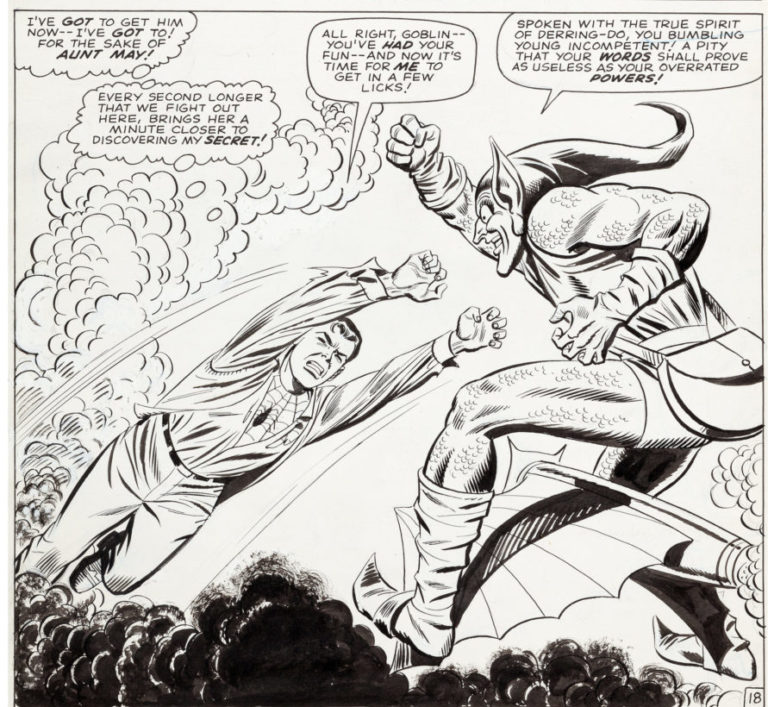
Artist
Simple enough. There is a reason why auction houses sort art by artists last name, it is the first thing collectors use to categorize what they want. The most common collectors primarily collect by artist. We collect artists whose work strikes a cord with us, and disregard those that don’t. Even when we love a certain character, we usually love them in the style of our favorite artists. It is standard in this hobby most of the time for mediocre pages by top level artists too far exceed the desirability of great pages by lesser known artists. For instance anything Jack Kirby has drawn will have interest. Whether it is a boring no action panel page or a simple sketch, there is demand. There is always a buyer for work his hand has touched.
Background
This is the largest and most encompassing factor in assessing art. Background is about the significance of the art in comics, and can be for a variety of reasons. This includes factors such as “keyness” of the art(first appearances), nostalgic/age appeal, writer/story significance and rarity(artist or character). Let’s talk about each factor briefly.
First off, key art applies to the first appearances of characters, as well as key story moments for a character. In the current market this category of collecting has been expanding, especially as comic book collectors enter the hobby that are use to chasing key issues and apply that logic to OA.
Nostalgic appeal of art is a huge factor in the market, many collectors collect to relive our childhoods as we “deal” with the real world and gravitate towards art that we enjoyed as children. Certain time periods that are important in the medium also can have a strong influence. Related and something that will be visited more in the next article, is time period of an artists career. Peak output by an artist will always be more sought after than non peak work.
Storylines are a large focus for collectors. Art from classic stories and/or highly acclaimed writers is one of the most surefire way to get a lot of collectors chasing a piece. If you look at the best sellers list of collected editions of books, you will see demand for all the art from these classic stories.
Rarity is also an important factor as when collectors know supply is limited, it can really drive up the desirability of a piece as it can be a “now or never” thing. Some artists have small bodies of work. Some characters have few appearances. If a story was short, or if little art is known to exist in the market collectors will factor it in.
Character
This is the simplest and perhaps most important category that contributes to desirability of comic art. Comics are about the characters they have created above all else. Content is king in this hobby. There are many collectors who collect specific characters. Spiderman is the best example of collecting by character. There is always a buyer for a quality Spider-man action page regardless of the artist, age of the art or significance. A pretty simple rule is the more popular a character is, the more desirable his art will be. On the other hand unpopular characters(especially when we talk about non “hero” supporting characters) are almost always a hard sell, unless done by an A+ level artist or have a significant backstory.
Size
The final category, and one that almost works as a multiplier to the sum of the first 3 categories is very simple to understand and pretty universal. For instance if you have two splash pages from the Amazing Spider-man, all things being equal and one has a 5 inch image of Spidey and the other has a 10 inch image, The 10 inch image will be more sought after. Size matters! Also total image area of art matters, although there are many collectors who don’t pay attention to this detail enough. If an artist has a piece done at 9×13.5 and another at 10×15 all things being equal, The 10×15 piece is more desirable. Comic Art is fairly small to being with, so a few inches can make a large difference. Also for those that don’t remember their geometry Area = L x W. So a 9×13.5 piece has an area of 121.5 square inches and a 10×15 piece has an area of 150 square inches. It has almost a 25% larger image area! Here is a tip as well, make sure you look at image area of art and not the total size of the paper. 10×15 image area is the same no matter how large a piece of paper is. Sometimes sellers will only mention paper size, no matter the size of total image area.
While sometimes the effect of size is less noticeable in pictures or scans, it is important to note the effect more pronounced in person of larger art. Give me the big stuff!
Now you know objectively, what makes art desirable in this hobby. This should especially help those newer to the hobby, when sometimes prices can seem absurdly high and random for certain material. I hope this simple to remember acronym works for you. Now let’s look at the ABC’s for some of the heavy hitters in the hobby, to get some experience using them.
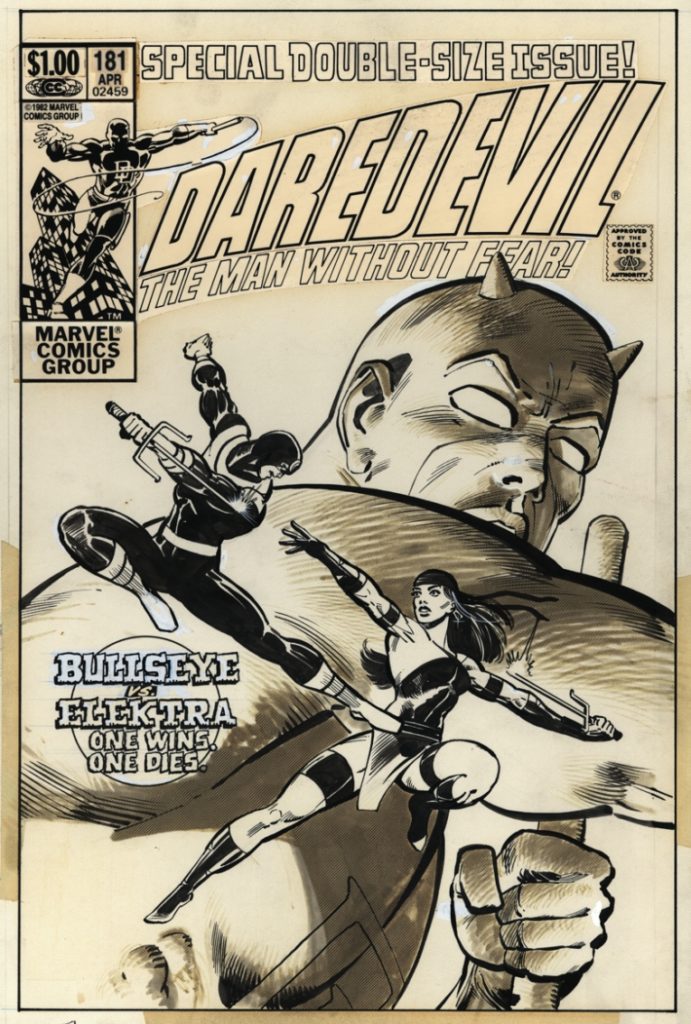
Putting Them Together
Most of the time it takes a hit in more than one category to really make a good piece, although a home run is a single category can make something desirable as well. To keep to the baseball analogies the grand slams start to happen when a piece has desirable attributes from the artist, background and character. Here are examples for the specific combinations from the ABC’s, taken from some of the most popular samples of the hobby.
Examples
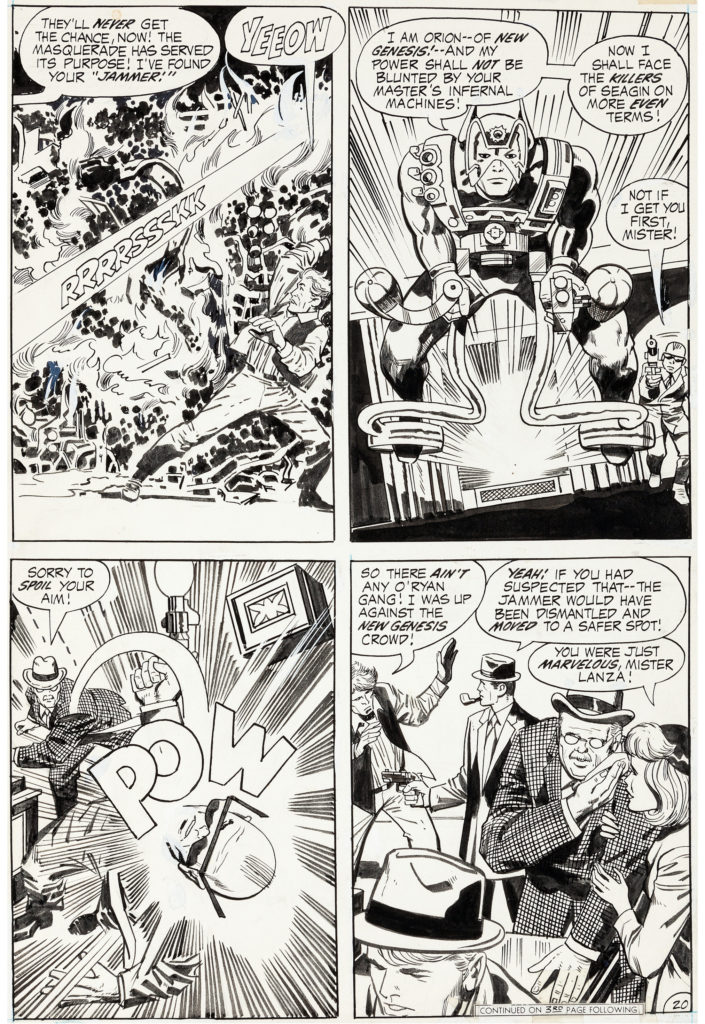
Artist Only: Jack Kirby
There is a market for any work Jack Kirby has worked on, as he is one of if not the most important artist of all time. A Kirby pencilled work is almost a must have in any quality comic art collection.
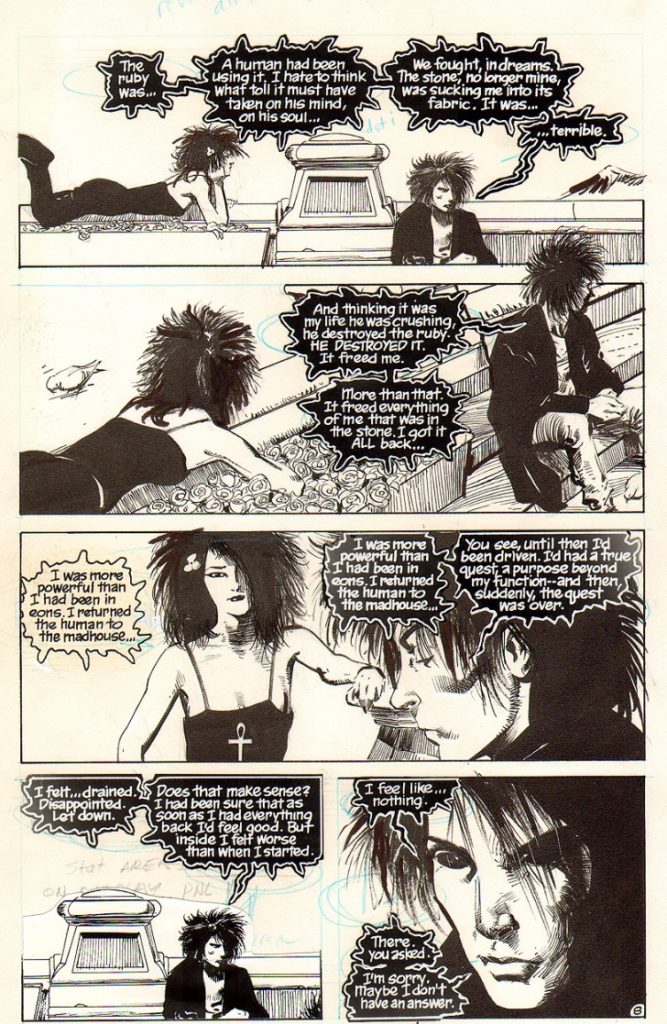
Background Only: Sandman.
Neil Gaiman’s tale is one of the best in the history of comics, and every single page from the story is sought after, regardless of the artists. Of course some artists have more appeal, but it may be impossible to buy any page from this story no matter how mediocre for under $1000. Anything published in the series is highly sought after.
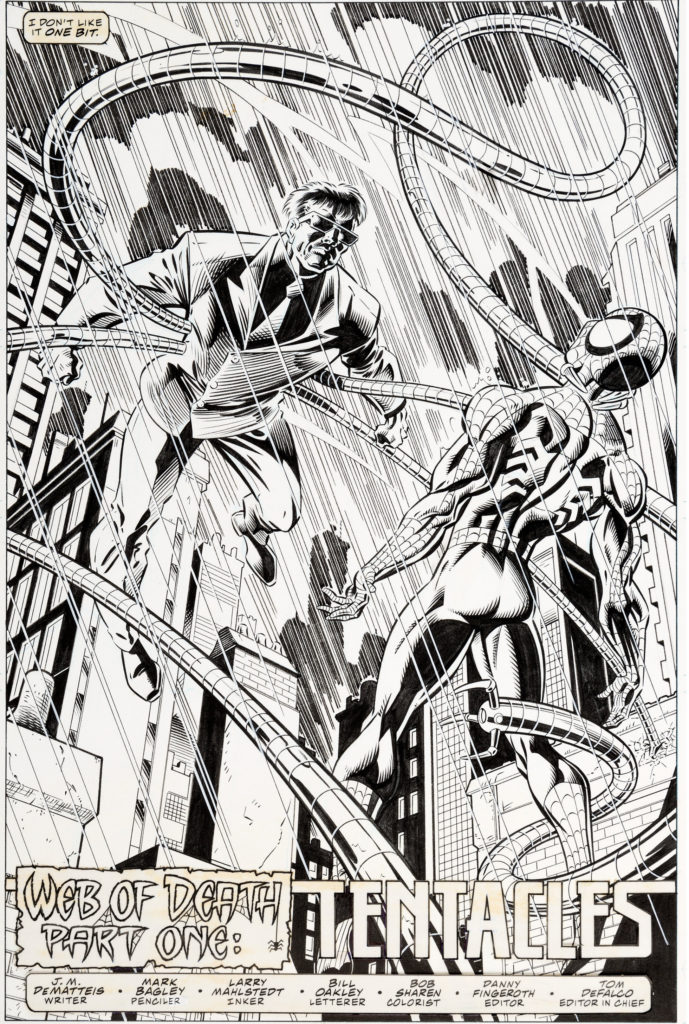
Character Only: Spider-man.
The most popular hero of all time. There is a market for any good Spider-man page regardless of other factors.

Artists/Background: Bernie Wrightson is bar none one of the most talented people to ever work in comics. He was the master of horror, and the pinnacle of his workis his Frankenstein plates, done based on the original Mary Shelley novel. These illustrations are some of the most sought after in the hobby.

Artist/Character: John Buscema Silver Surfer. John Buscema is one of the most beloved Silver Age/Bronze Age artists in the genre. But where desire really ramps up for his work is with the wonderful Silver Surfer. Demand for Buscema Silver Surfer pages eclipses his other works by far.
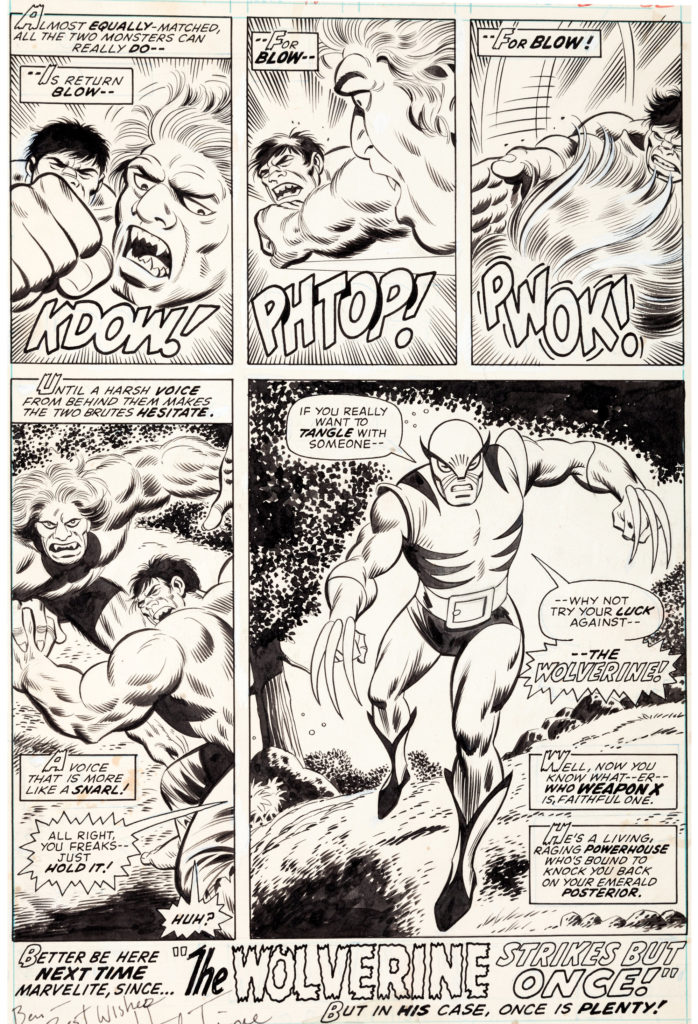
Background/Character: We will use a very specific piece for this example, The first appearance of Wolverine done by Herb Trimpe. Done on the last page of The Incredible hulk #180 this is one of the highest priced sales in the hobby. When you have first appearances of popular characters, artists can become irrelevant to the desirability of the piece.
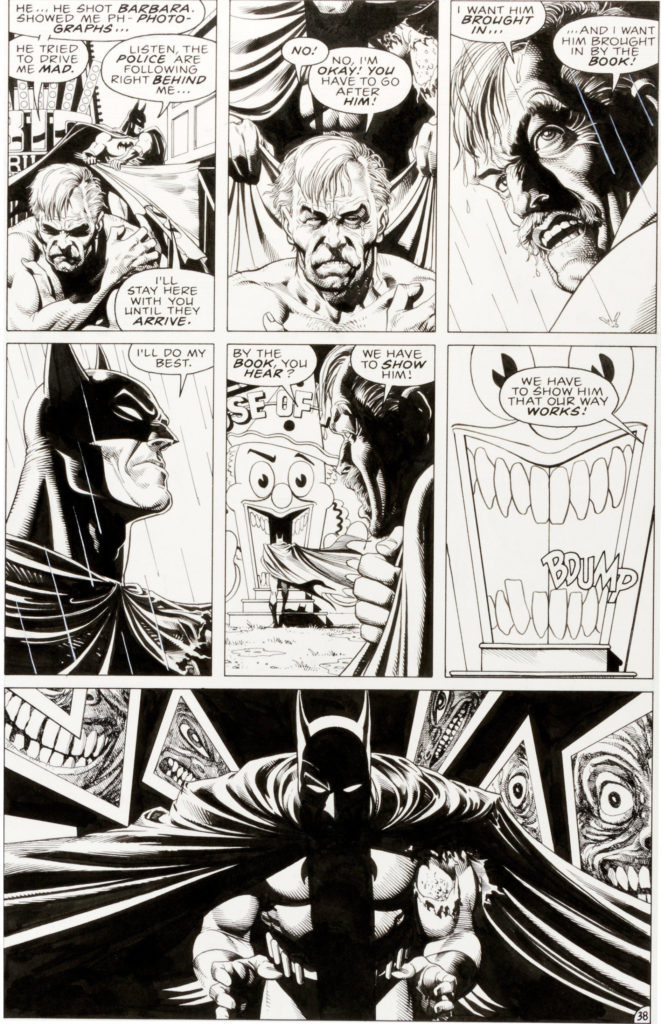
Artist/Background/Character: Finally we will end with an example where A B and C art strong with The Killing Joke. The Killing Joke was illustrated by Brian Bolland and written by Alan Moore. It is only 64 pages long. It is a key moment in the history of the most famous hero/villian duo of all time. It is the perfect recipe for a grand slam. Fans of the story would love to own even the absolute worst page in the book. and the good pages are some of the most desirable panel pages in the hobby(An interesting tidbit, TKJ has no full page splashes.)
Hopefully these example make you more comfortable with using the ABC’s. We used premium examples, but remember to use them for any and all art. There is much more to cover when it comes to assessing comic art. Next we will take the assessment of art a step further in the article “Grading Comic Art.” Coming Soon!

